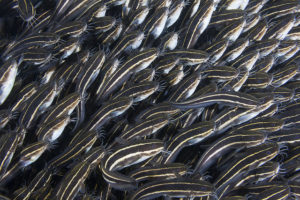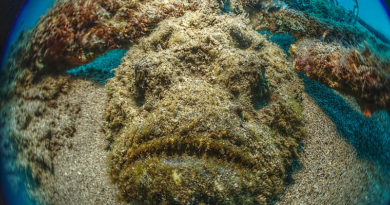Bolinao Days
I’m back in Bolinao, Pangasinan, at the site of the University of the Philippines ‘ Marine Science Institute‘s lab. It’s a great gig to be a visiting professor here, I have three months to research gobies, specifically the goby-shrimp interaction. I will also teach a class on fish neurobiology, and teach some marine biologists how to scuba dive. Happy days!
Bolina is on Luzon, the main island of the Philippines in the north. On Luzon’s west coast you can see a “nose”, and the gulf behind that nose is the Lingayen gulf. Bolinao is part of the province of Pangasinan. The landscape is hilly, not as spectacularly mountainous as in Negros. Small island dot the coastline; a bit further south-east, near Alaminos, are the “Hundred Islands”, a mini-archipelago of islands about the size of soccer fields.
The Lingayen gulf is shallow, not much deeper than 40 meters in any spot I have dived. There is a lot of milkfish (“bangus”) farming which unfortunately pollutes parts of the gulf. A real attraction is the UP giant clam breeding program, with rows and rows of hundreds of these gigantic clams. I’ll have new images of these soon!
This is not a must-see destination for world travelers, but a nice corner of the Philippines nevertheless. You can see a slice of country life, with almost no other tourists or foreigners around. It takes about 7 hours from Manila by bus to reach Bolinao. I like traveling, but 7 hours in a bus is a bit much! In central Europe, you can visit Hungary, Slovakia, Austria and Germany during one 7 hour road trip. The Philippines are a big country and they don’t have the Autobahn, so travel takes a while. Bolinao itself is a small town with a church, a market, a few restaurants and a few more pawn shops.
The Giant Taklobo restaurant, about 100 meters along the 2nd side road to the left past the bus terminal (going towards the church), actually has really good Japanese food, Rahmen, Sushi, all of it. The chef must have worked in Japan previously.
The people in Bolinao are super friendly, like pretty much everywhere I have been in the Philippines, and speak English. This not being a tourist destination makes the interaction with the locals even better, no one tries to sell you useless souvenirs.
What I always enjoy in these small Filipino towns is the market – and especially the fruit part of it! Last year the fruit vendors had atis (my favorite! Almost like a vanilla pudding), lanzones and several other rare tropical fruit for sale. I haven’t seen much of these this year, but it’s still a bit early in the season.

